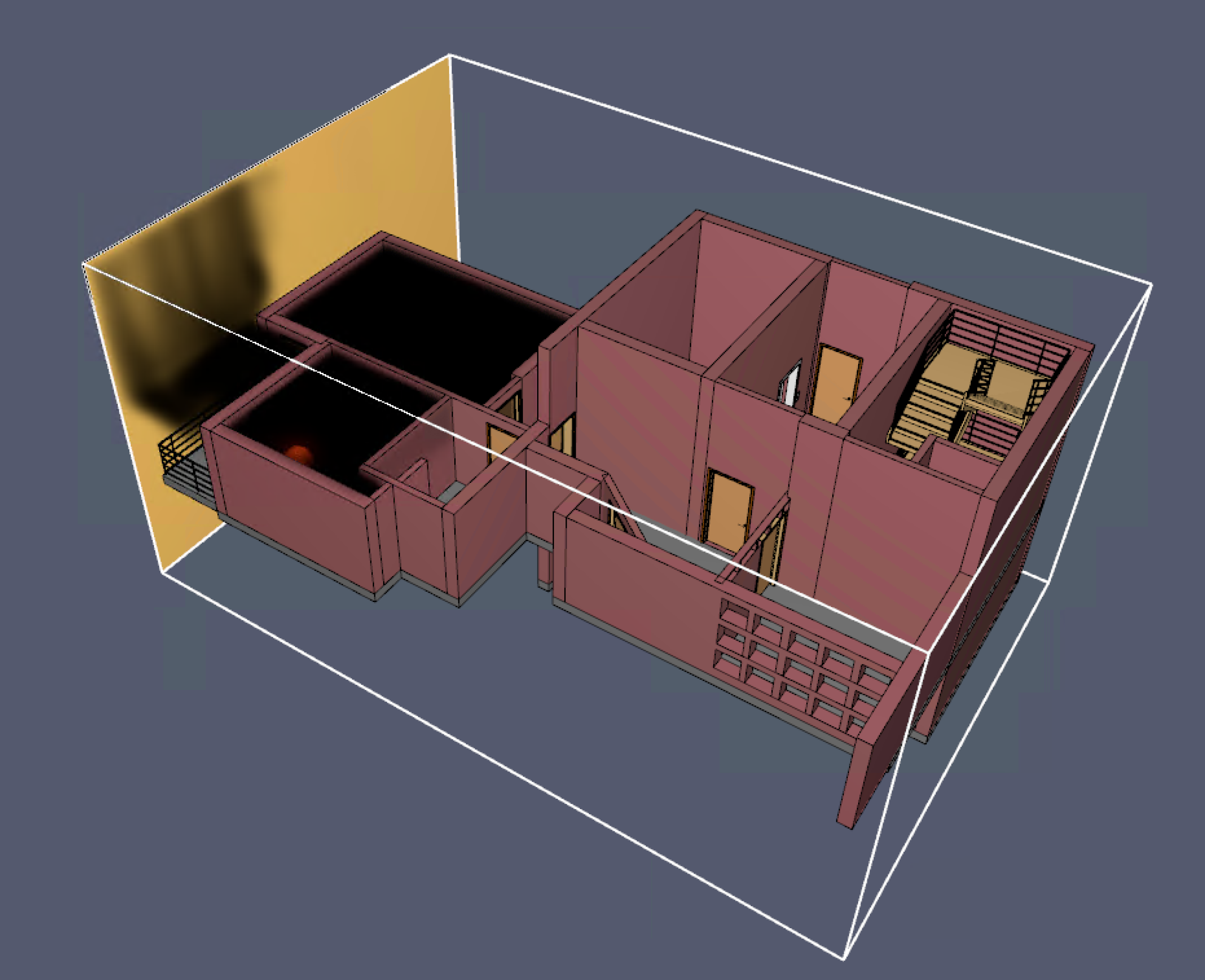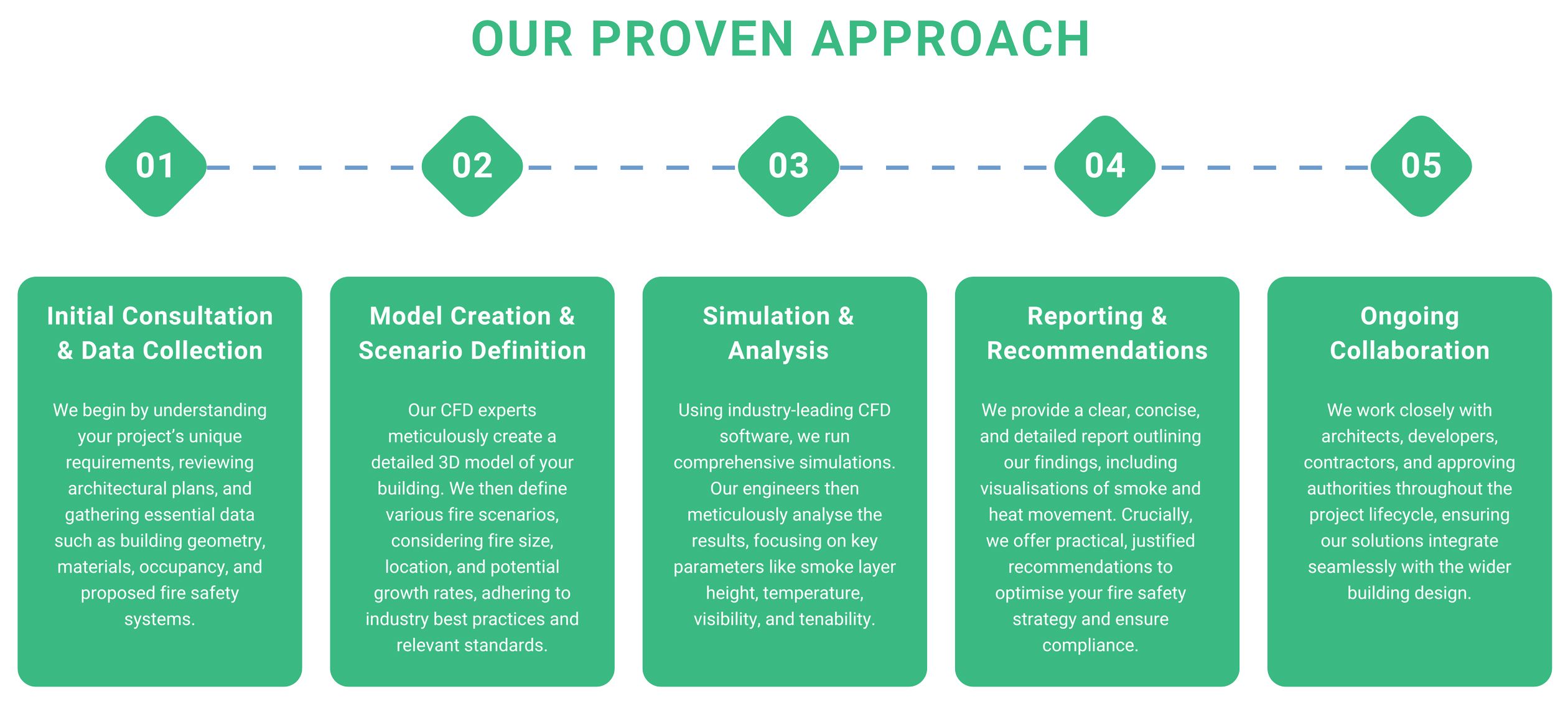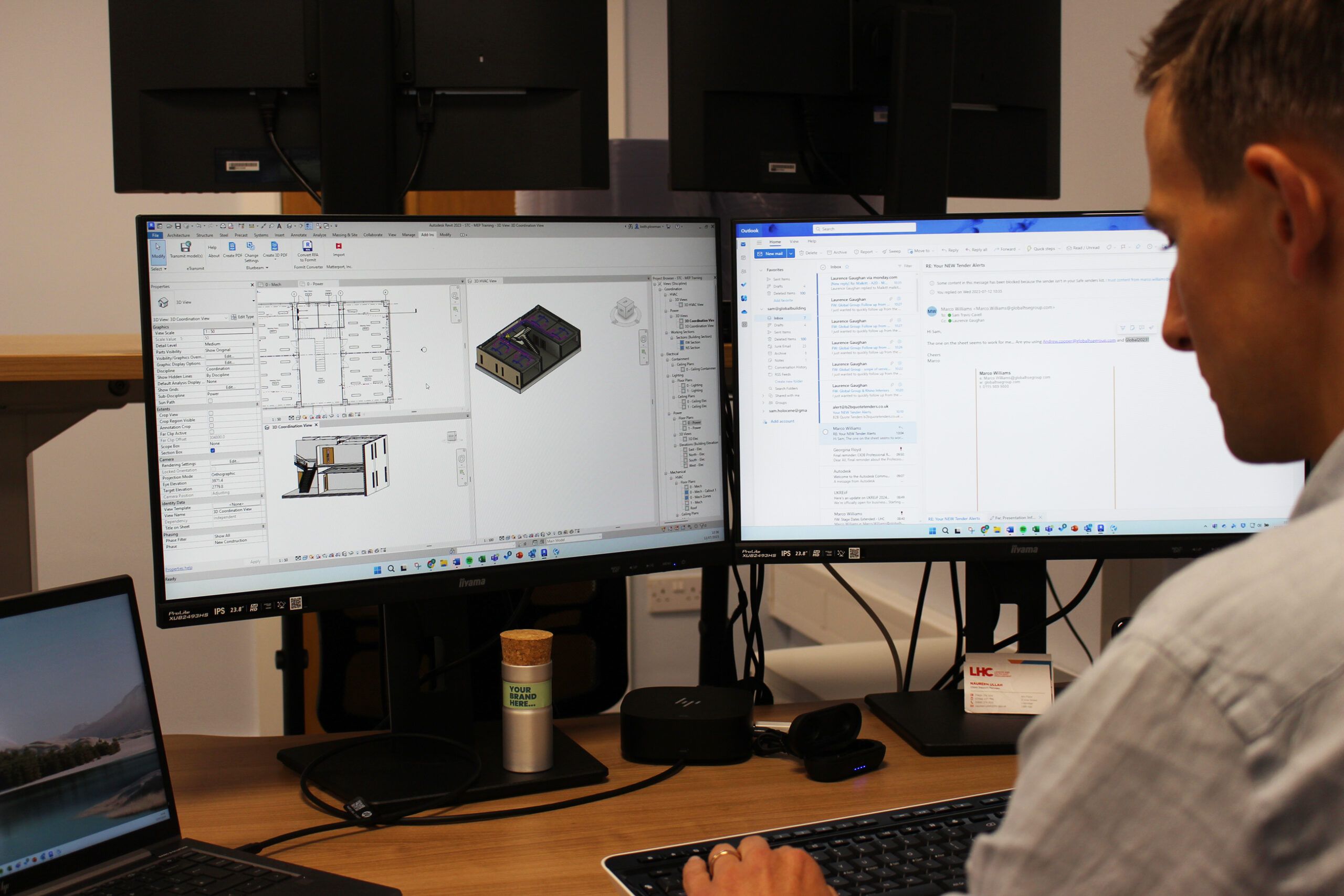
We can build your CFD Model
Elevating Fire Safety Through Cutting-Edge Simulation
If you have a mechanical ventilation system, you need CFD Modelling, as per Approved Document B (ADB) requirements.
At Global Building Environments, we leverage the power of Computational Fluid Dynamics (CFD) modelling to deliver unparalleled insights into fire and smoke behaviour within your building designs. This advanced analytical tool surpasses traditional fire safety approaches, offering a detailed, data-driven understanding that informs superior design, ensures regulatory compliance, and ultimately safeguards lives and assets.
Unlike simplified “zone models” that divide a space into a few uniform volumes, CFD modelling utilises millions of discrete control volumes, providing an excellent level of resolution and accuracy. This detailed simulation enables us to account for complex geometries, turbulent flows, and intricate interactions that are not possible to capture with simpler methods.

What is CFD Modelling? Your Building’s Digital Twin
Computational Fluid Dynamics (CFD) is a sophisticated numerical method that simulates fluid flow, heat transfer, and combustion. In the context of fire safety, it allows our expert engineers to create a virtual, three-dimensional representation of your building. Within this digital twin, we can precisely model and predict:
- Smoke Movement and Spread: How smoke fills spaces, its velocity, and its impact on visibility and tenable conditions for evacuation.
- Heat Distribution: The spread of heat throughout the structure, identifying potential hotspots and assessing the thermal impact on structural elements.
- Toxic Gas Concentrations: The accumulation and movement of harmful combustion products.
- Effectiveness of Fire Safety Systems: How natural and mechanical smoke ventilation, sprinklers, and other fire protection systems will perform in a real-world fire scenario.
Why Choose CFD Modelling for Your Project?
Optimised Design & Cost Efficiency
By accurately predicting fire behaviour, we can optimise the design of smoke control systems, ventilation strategies, and evacuation routes, often leading to more efficient and cost-effective solutions than prescriptive code-based approaches. This can mean smaller smoke shafts, extended travel distances, or reduced sprinkler requirements, provided it is safe to do so.
Enhanced Occupant Safety
Critical for ensuring tenable conditions for evacuation, CFD helps us determine Available Safe Egress Time (ASET) and compare it against Required Safe Egress Time (RSET), ensuring occupants have sufficient time to escape safely. It identifies areas where smoke or heat may impede egress.
Regulatory Compliance & Approval
Our comprehensive CFD reports provide robust, evidence-based documentation suitable for submission to Building Control Officers (BCOs) and the Building Safety Regulator (BSR), demonstrating compliance with relevant regulations (e.g., Parts B1 and B5 of Schedule 1 of The Building Regulations 2010, BS 9991, BS 9999).
Validation of Innovative Designs
For architectural visions that deviate from prescriptive guidance, CFD allows us to validate performance-based fire safety strategies, preserving unique building features while ensuring paramount safety.
Problem Solving for Complex Scenarios
- Tall buildings (above 30m)
- Large open spaces such as atria, shopping centres, or exhibition halls
- Car park ventilation systems
- Complex geometries or mixed-use developments
- Assessment of existing smoke control systems for Higher-Risk Buildings (HRBs)
Risk Mitigation
Identify potential hazards before they become critical issues, enabling proactive design adjustments and effective mitigation strategies.

Fully Accredited





Working with GBE
What sets us apart is our capability to guide clients through the complex landscape of building safety regulations, particularly those mandated for high-risk buildings following the 2021 regulatory changes.
We provide a holistic approach to CFD Modelling, ensuring a seamless experience, as there is no need to coordinate with multiple vendors or service providers.
Our team possesses in-depth knowledge and expertise in navigating building safety regulations, particularly those related to high-risk buildings. We stay up-to-date with the latest regulatory changes and ensure that our solutions are fully compliant with these requirements.
We understand that navigating regulatory processes can be a daunting task. So, we offer personalised guidance and support to our clients, helping them understand the regulatory landscape and ensuring that their smoke vent control systems meet all necessary compliance standards.
Our clients know that their smoke vent control systems not only meet regulatory requirements but are also designed and installed to the highest standards of quality and reliability. Our end-to-end solution streamlines the process, saving time, effort, and potential headaches associated with compliance and maintenance.
Our comprehensive approach to smoke vent control, coupled with our expertise in regulatory compliance, helps minimise the risk and liability for our clients. We take proactive steps to ensure that their buildings are safe and compliant, reducing the likelihood of fines, penalties, or legal issues arising from non-compliance.

| Sam Travis-Cavell | Head of Building Environments | Contact |

| Keith Plowman | Technical Consultant | Contact |

| Srinivas Sarath Thagapillai | Graduate Building Services and Sustainability Engineer | Contact |
Sam Travis-Cavell is a Chartered Mechanical Engineer and Head of Building Environments at Global Technical Services, leading sustainable, safety-focused construction design with advanced thermal and flow modelling, BIM, and building physics. He mentors and builds high-performing teams, integrating innovative digital tools to optimise energy performance and efficiency well before project realisation.
Keith served 18 years in the RAF Fire & Rescue Service both in the UK and abroad, working his way up to watch manager and training manager. During this time, he completed an engineering degree and joined Global in 2023, excelling with his innovative approach to problem solving, building safety and compliance, and utilising new technology.
Sustainability-focused Professional with a Master’s in Low Energy Building Services Engineering and a Bachelor’s in Architecture. Committed to delivering sustainable, high-performance buildings that align with environmental goals and client needs.
CFD Modelling Enquiry
Enquire today with GBE to see how we can support you with your CFD Modelling.

Frequently Asked Questions
CFD modelling is often required for performance-based fire safety designs, particularly in complex buildings with unconventional layouts, large open spaces such as atria, or when a departure from prescriptive code guidance is proposed to achieve design flexibility or cost efficiency. It’s also increasingly used for validating existing systems in Higher-Risk Buildings.
The duration varies depending on the complexity and size of the building, as well as the specific fire scenarios. Simpler models for residential corridors might take a few days, while comprehensive analyses for large commercial buildings could take weeks. We provide clear timelines at the project’s outset.
We typically require architectural drawings (including floor plans, sections, and elevations), details of proposed fire safety systems (e.g., smoke vents, sprinklers, and fire alarm zones), building materials, and the intended occupancy classification.
When conducted by experienced professionals using validated software and realistic input parameters, CFD simulations provide highly accurate and reliable predictions of fire and smoke behaviour. We adhere to best practices, including sensitivity analyses and validation against real-world fire data, to ensure the highest level of confidence in our results.
Zone models simplify a space into a few layers or “zones,” assuming uniform conditions within each. CFD models, also known as computational fluid dynamics models, discretise the space into millions of small volumes, solving complex equations for fluid flow and heat transfer within each. This provides a much more detailed and accurate representation of fire phenomena, particularly for complex geometries and turbulent flows. While zone models are quicker, CFD offers unparalleled fidelity for intricate scenarios.